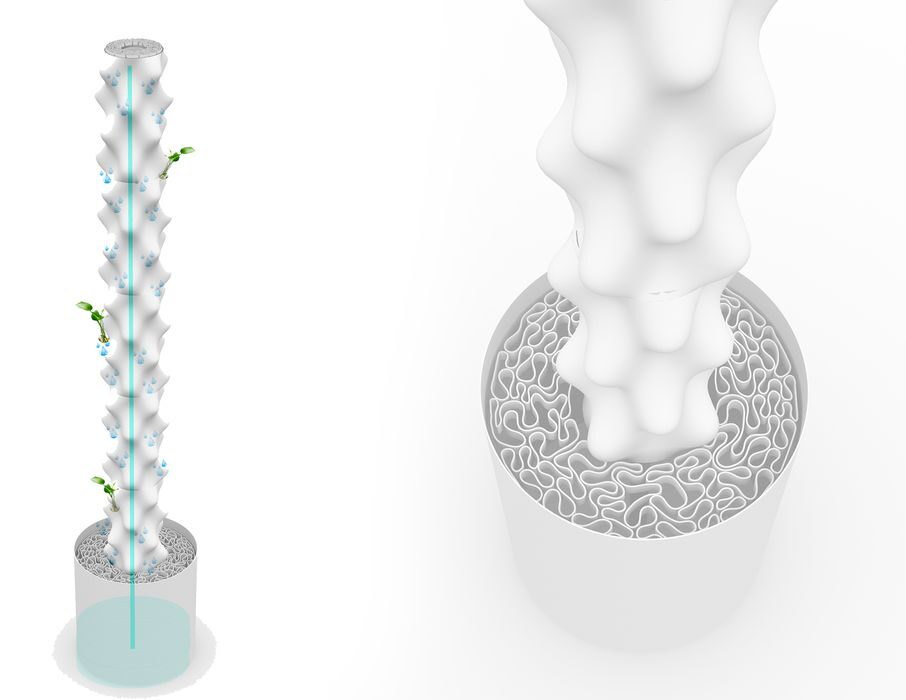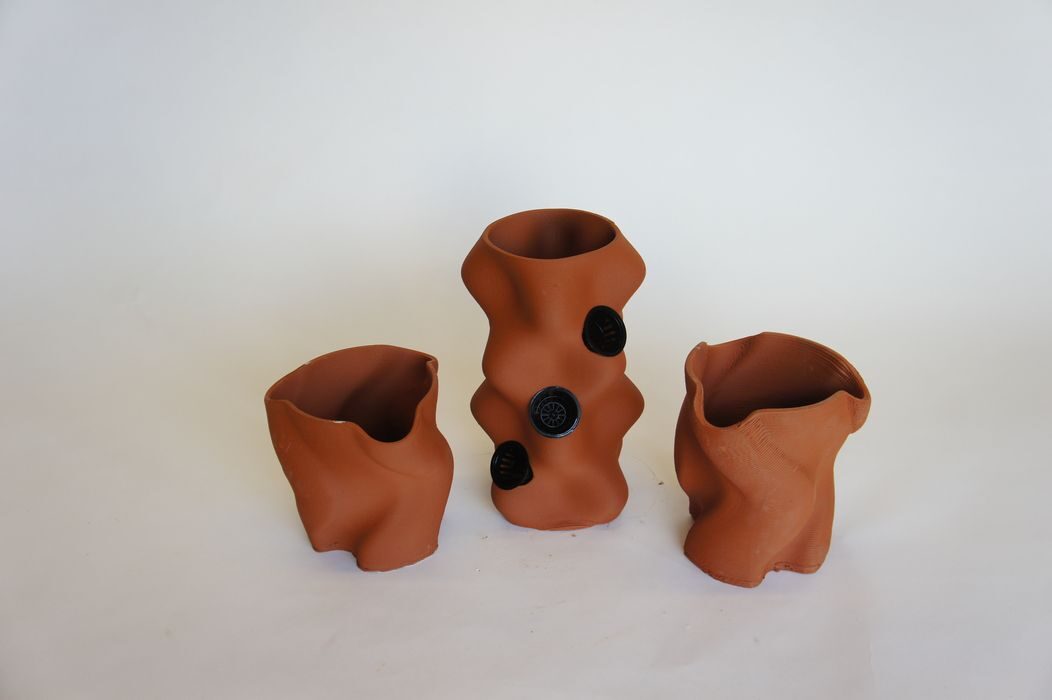
This week’s selection is the ClayPonic V1 urban farming solution by EcoTech Lab.
Urban farming has attracted increasing interest as the climate changes. Traditional farming is now subject to extreme weather conditions that will only get worse over time, so some are seeking alternatives that provide more predictable farming output.
There are a number of forms of urban farming, but one that isn’t well known is “aeroponics”. Unlike hydroponics, aeroponics involves spraying plant roots with an atomized flow of nutrient-infused water droplets. This is a very efficient method to deliver the required inputs to plants.
EcoTech Lab took the aeroponic concept and developed ClayPonic V1. This is a 3D printed design made in ceramics — local clay to be precise. The printed components are stacked and then equipped with the necessary sprayers.

Plants are mounted in holes on the sides of the stacked columns. The leaves are outside, where they can absorb sunlight and perform photosynthesis, while their roots are protected inside and supplied with water droplets.

The stacked design allows for considerable food production per area: this is a form of vertical farming. EcoTech Lab explains:
“ClayPonic V1 enables year-round cultivation with minimal water and nutrient consumption by maximizing plant nutrition assimilation and accelerating growth. The deployability merit of the model facilitates its placement and integration into the built environment in urban centers and around human settlements, reducing transportation costs and bolstering local economies. The verticultural configuration of the model and its soil-free nature significantly reduces risks of soil-borne diseases, pathogens, and pests. This revolutionary approach to farming efficiency improves agricultural practices and reduces dependence on chemical pesticides and herbicides, promoting eco-friendly farming principles.”
The solution was deployed in Atlanta, where during a summer period it provided a large amount of vegetables for the homeless in 2023.
It isn’t clear what 3D print technology was used to produce the ClayPonic elements, but my guess is that they could have used WASP equipment, which is well known for its ability to competently 3D print local clay material.
There’s another benefit to this approach, explained by EcoTech Lab:
“Clay 3D Printed Hydroponics offers a wide spectrum of therapeutic experiences by communicating to the soul, mind, and spirit of our bodies through multitudes of sensations: sighting, hearing, smelling, touching, and tasting – the five human senses. From the moment individuals encounter the system, whether in an educational setting or a public space and horticulture garden, they are fully involved in a sensory experience that transcends mere food production.”
I think I might try something like this myself this summer.
Via EcoTech Lab
